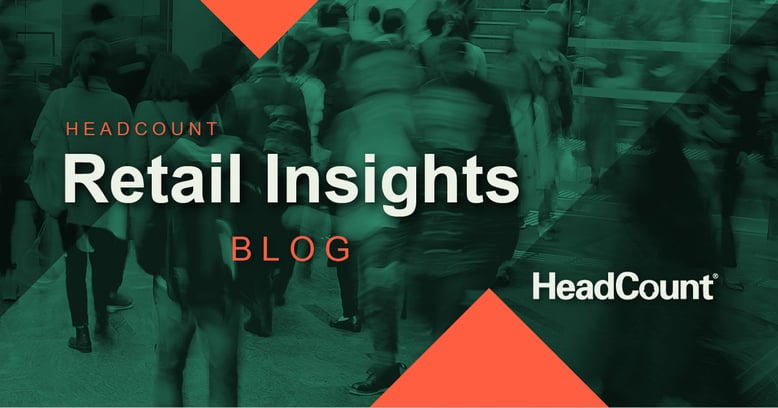Mystery Shopping & Customer Experience
While the benefits of conducting Mystery Shops and measuring customer satisfaction are well understood by retailers, the strong connection between traffic, conversion and customer experience are not. Without traffic and conversion data, you will draw the wrong conclusions about your research and waste money on Mystery Shop visits that are not well targeted.
By including traffic and conversion data in your next Mystery Shop analysis, you would be much more able to understand what is driving the outcomes in customer satisfaction and, ultimately, overall performance.
You already know that as traffic increases, store performance often decreases because the stores are busier and, all things being equal (such as staffing levels), you would expect a lower Mystery Shop score.
But without traffic and conversion data you are likely to draw the wrong conclusion.
To assess customer service, it is important to deconstruct your sales into traffic, conversion and average ticket. Look at each variable and think about which ones are affecting sales performance the most.
Yes, customer satisfaction can impact store traffic because customers will decide whether or not to recommend and return to a store based on their experience. But the impact is relatively small.
The most critical variable to analyze is conversion rate. Store performance happens within the four walls of the store, it’s not hard to understand why conversion rate plays such an important role in moderating and mediating the relationship between performance and sales results.
Looking for proof of the importance of conversion for customer satisfaction?


Years ago, HeadCount leveraged learnings from Bernard E. Lefang, Ph.D. who was then Vice President of Research and Analytics at Market Force, the leading global customer intelligence solutions company.
At the time, Bernard and his team merged and analyzed many internal and external data sources, including demographics, economic indicators, site specific characteristics, and others, in order to help refine and make their analytics models more robust. Following the analysis, Lefang confirmed that “of all the data sets we've analyzed, the ones that have had the most impact on our modeling have been traffic and conversion data.”
Furthermore, according to Lefang, the impact was significant. “To give you an understanding of the magnitude of bringing traffic and conversion data into our models, we have increased the explanatory impact of the model by about 7-8 times! Traffic and conversion are critical pieces of the puzzle.”
Misinterpreting customer satisfaction scores
You invest in collecting and analyzing Mystery Shop and customer satisfaction so you can determine how to move the sales performance lever. In short — you want to know how to improve your bottom line!
Increasingly, you must target your Mystery Shops, instead of looking at the data at the brand or banner level and drawing general conclusions. If you are using Mystery Shop data, it is critical that you look at store-level detail including conversion rates.
Let's look at practical, hypothetical example:
A Mystery Shop is conducted at a store on Monday, and the score was excellent – 90%! However, on Tuesday another Mystery Shop was conducted, and the score was significantly lower – only 70%.
In this example, imagine you now compare your sales on Monday to sales on Tuesday and discover that sales were actually higher on the Tuesday when the Mystery Shop scores were lower.
This seems totally illogical. Why did this happen? What would you conclude?Without having traffic and customer conversion data at the store level to put the Mystery Shop scores in context, it would be very difficult for you to answer that question.
Now, imagine if you did have traffic and conversion data and, in this case, you could confirm that your higher sales on Tuesday were due to higher traffic. Your conversion rates were sagging during busy times which means customer service may have suffered due to the 'busy-ness' of the store, even if your sales did not.
False sense of comfort
Customer satisfaction scores are typically presented on on a 7-point scale, so if a store gets a 5 or even a 6, there tends be less complacency. But, note: a customer who who gives you a 7 rating on 'satisfaction' is three times as likely to recommend your store as somebody who gives you a 6.
Even if you have customer satisfaction scores that appear high, you should still review traffic and conversion. If you had two stores that both had 90% customer satisfaction ratings and similar sales volume, you might conclude that both stores were top performers. But if you knew that one store had a conversion rate of 30% and the other had a conversion rate of 50%, it would completely change how you view their respective performance.
“Knowing what I know now about traffic and conversion, in my opinion, it is one of the most important things a retailer can look at because it so fundamentally tied to operational performance.” Bernard E. Lefang, Ph.D
"Transaction data won’t get you to the level of accuracy you need in order to model and have actionable information. You cannot deny the evidence, traffic and conversion is something that retailers need to look at.” Bernard E. Lefang, Ph.D
To improve your sales, you need to understand what lever to pull. Traffic and customer conversion help you do that.
